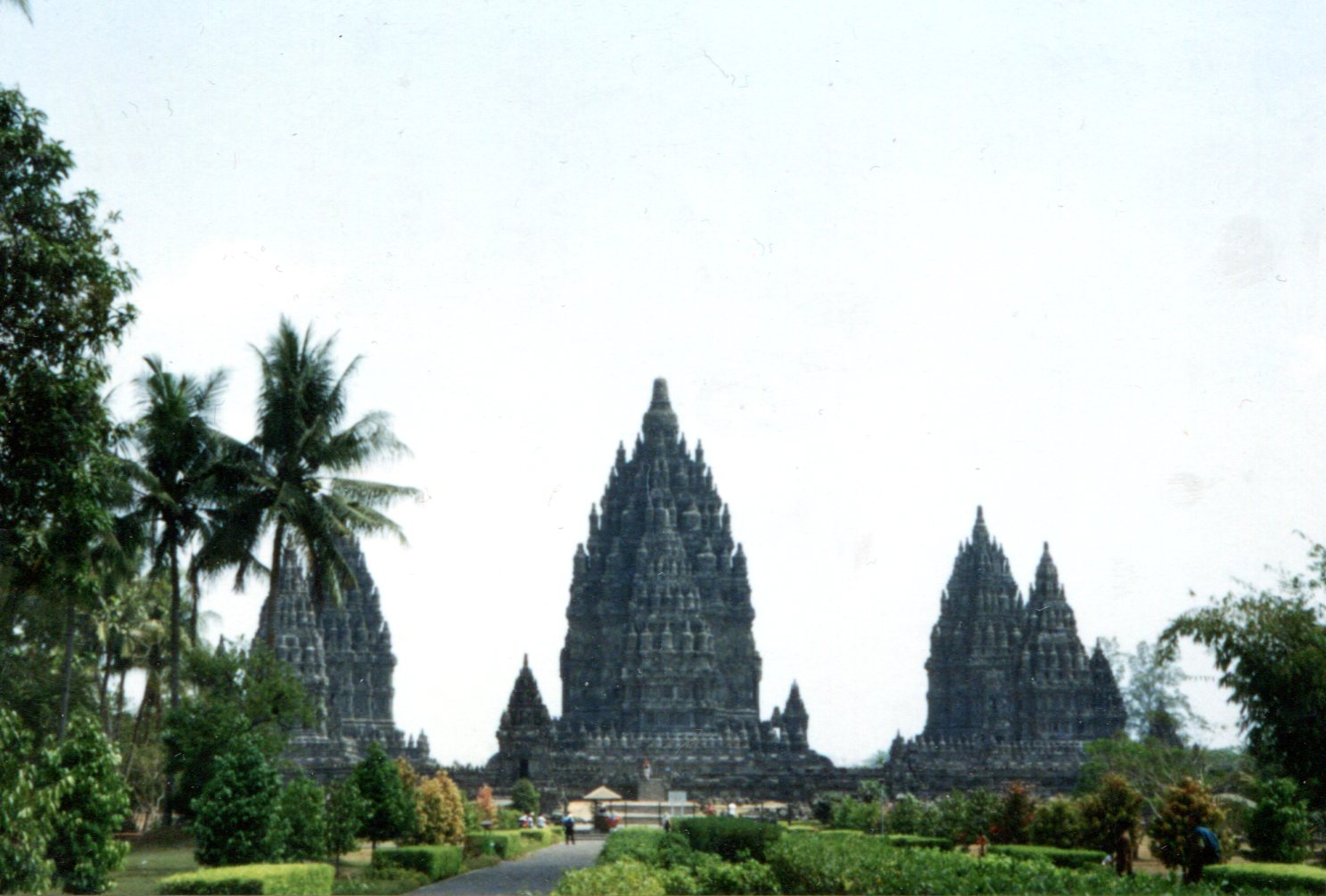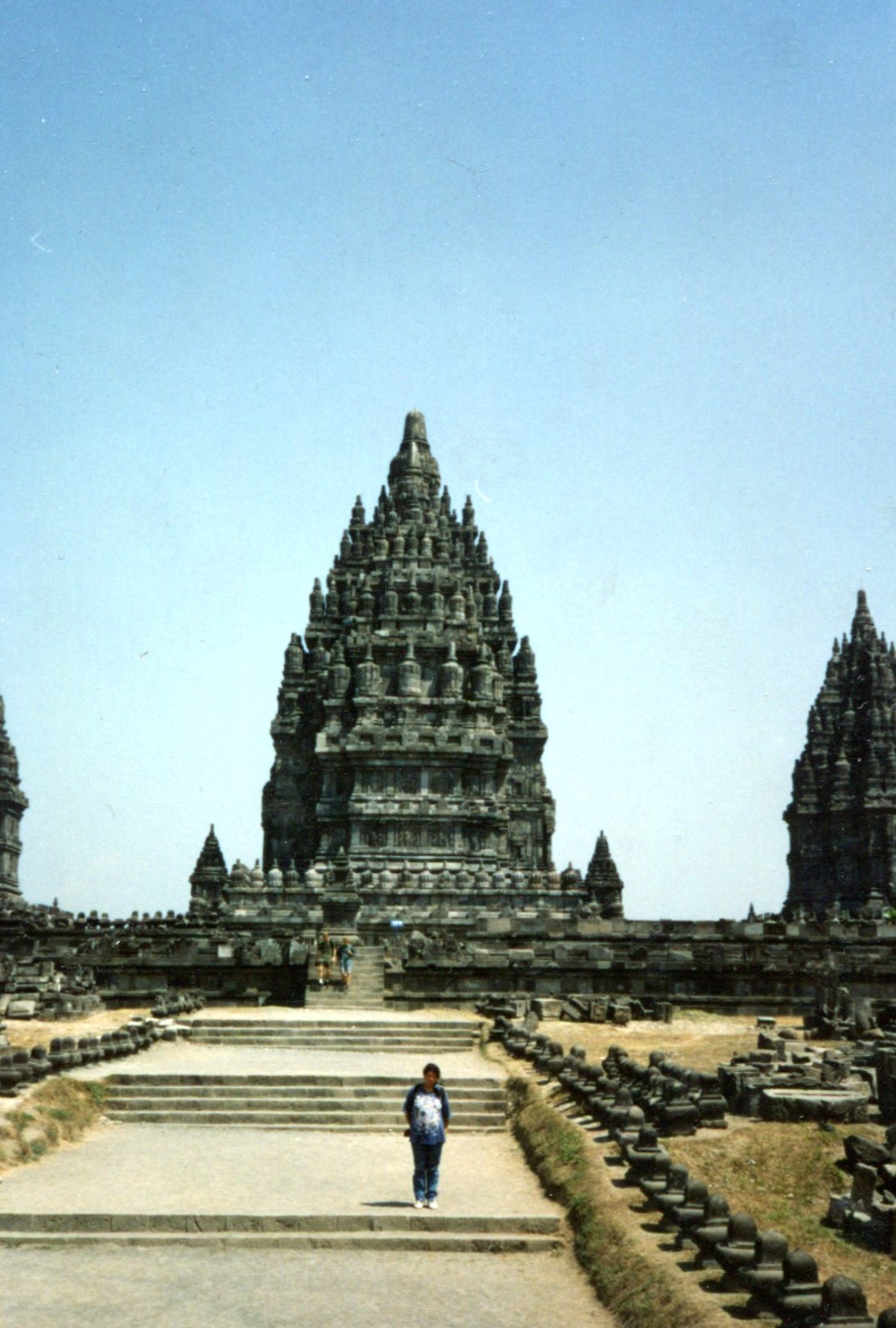Candi Prambanan, or Candi Rara Jonggrang, is a 9th-century Hindu temple compound near Yogyakarta in central Java, though it had lain in ruins for centuries before reconstruction in the 20th century. UNESCO asserts that “the temples collapsed due to earthquake, volcanic eruption and a shift of political power in the early 11th century, and they were rediscovered in the 17th century. These compounds have never been displaced or changed.
“Restoration works have been conducted since 1918, both in original traditional method of interlocking stone and modern methods using concrete to strengthen the temple structure. Even though extensive restoration works have been done in the past and as recently as after the 2006 earthquake, great care has been taken to retain the authenticity of the structures.”
 My snapshots hardly do the structures justice. We visited in the mid-morning of August 11, 1994, after seeing Borobudur earlier that morning. The increasing tropical heat made the temple compound a little harder to appreciate than Borobudur, but it was impressive all the same.
My snapshots hardly do the structures justice. We visited in the mid-morning of August 11, 1994, after seeing Borobudur earlier that morning. The increasing tropical heat made the temple compound a little harder to appreciate than Borobudur, but it was impressive all the same.
More from UNESCO (the compound became a World Heritage Site in 1991): “Prambanan, named after the village, is the biggest temple complex in Java. It is actually a huge Hindu temple complex… Dedicated to the three great Hindu divinities, this temple with its decorated reliefs is an outstanding example of Siva art in Indonesia and the region.
“It was built in the 9th century and designed as three concentric squares. In all there are 224 temples in the entire complex. The inner square contains 16 temples, the most significant being the 47 m high central Siva temple flanked to the north by the Brahma temple and to the south by the Vishnu temple. These three ancient masterpieces of Hindu architecture are locally referred to as the Prambanan Temple or Lorojonggrang Temple (Slender Maiden); the compound was deserted soon after it was completed, possibly owing to the eruption of nearby Mount Merapi [volcanoes are always a risk on Java].”
 Looking at it, I’m glad that Indonesia hasn’t spawned as much religious extremism as some other parts of the world. This is the kind of place that ISIS and Taliban barbarians would dynamite.
Looking at it, I’m glad that Indonesia hasn’t spawned as much religious extremism as some other parts of the world. This is the kind of place that ISIS and Taliban barbarians would dynamite.